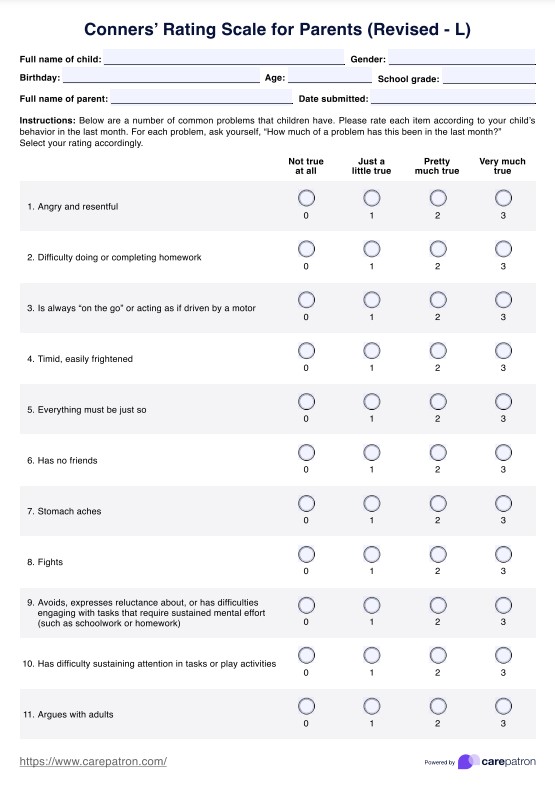The Conners score for attention-deficit/hyperactivity disorder (ADHD) is a numerical representation derived from Conners assessments that measure the severity of ADHD symptoms in individuals. This score helps clinicians evaluate the presence and impact of ADHD traits, allowing for a more accurate diagnosis and tailored treatment plan. It is typically based on responses from various questionnaires completed by parents, teachers, or individuals.

Conners’ Rating Scale for Parents (Revised - L)
Issue this revised long-form Conners’ Rating Scale for Parents to those who suspect their child might have ADHD.
Conners’ Rating Scale for Parents (Revised - L) Template
Commonly asked questions
The Conners parent questionnaire for attention-deficit/hyperactivity disorder (ADHD) is a standardized tool used by parents to report their child's behavior and emotional health. This questionnaire gathers insights into the child's symptoms, functioning in different settings, and any behavioral issues they may exhibit. The information collected helps healthcare professionals assess the child's condition and decide on the best course of action for treatment or intervention.
The best attention-deficit/hyperactivity disorder (ADHD) rating scale is subjective and can vary depending on the individual's needs and preferences. Mental health professionals often use various rating scales to evaluate ADHD symptoms.
EHR and practice management software
Get started for free
*No credit card required
Free
$0/usd
Unlimited clients
Telehealth
1GB of storage
Client portal text
Automated billing and online payments











